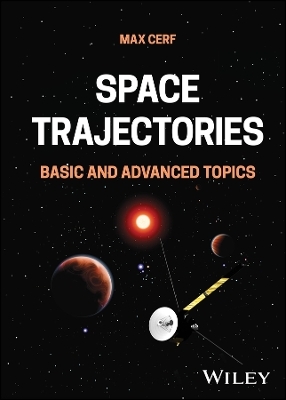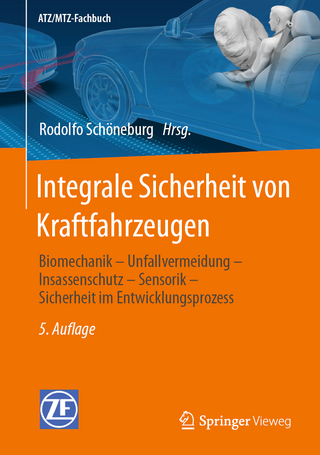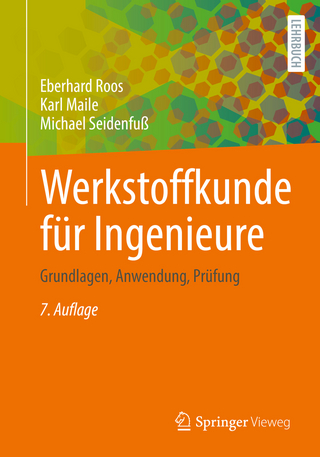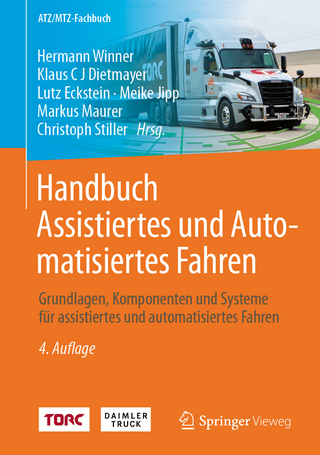
Space Trajectories
John Wiley & Sons Inc (Verlag)
978-1-394-29379-7 (ISBN)
Space Trajectories is the first book to offer a comprehensive exploration of orbital mechanics and trajectory optimization in a single volume. Beginning with a review of essential concepts, the book progresses to advanced space applications, highlighting methods used in today’s space missions.
The contents are organized into three parts. The first part delves into free orbital motion, covering topics such as Keplerian motion, perturbed motion, the three-body problem, orbit determination, and collision risks in orbit. The second part focuses on controlled orbital motion, discussing impulsive transfer, orbital rendezvous, thrust level optimization, low-thrust transfer, and space debris cleaning. The third part examines ascent and reentry, including launch into orbit, launcher staging, analytical solutions in flat Earth, interplanetary missions, and atmospheric reentry.
Each chapter is written in a modular way, featuring conclusion summaries, key points, and suggestions for further investigation. Examples are included with detailed solutions methods that readers can apply to solve their own trajectory problems.
Written by an expert of the topic who has performed guidance of Ariane launchers for 30 years, Space Trajectories includes information on:
Keplerian motion, motion time law, universal formulation, equinoctial parameters, and Lagrange coefficients
Osculating orbit, Gauss equations, gravitational and third body perturbations, Lissajous and Halo orbits, and invariant manifolds
Astrometry measurements, Kalman filtering, orbit uncertainties, and collision probability
Transfer in one, two, or three impulses, minimum-energy transfer, Lambert’s problem, high- and low-thrust transfer, and interplanetary path
Launch and reentry trajectories, propulsion systems, optimized thrust profiles, and launcher staging
Space Trajectories is an essential reference for students and researchers aiming to quickly understand the main issues in astrodynamics and the way to design trajectories, as well as space engineers seeking to consolidate their knowledge in the field of optimization and optimal control applied to aerospace and space missions.
Max Cerf, Ph.D. is an emeritus expert in mission analysis and optimization at ArianeGroup, where he has been involved in space mission analysis and developing and deploying the company’s Ariane launchers for 30 years. He is also serving as an Associate Professor at Sorbonne-Université, where his research focuses on control, optimization, and applied mathematics.
About the Author xv
Foreword xvii
Acknowledgments xix
Introduction xxi
Part I Free Orbital Motion 1
1 Two-Body Problem 3
1.1 Introduction 3
1.2 Keplerian Motion 3
1.2.1 Dynamic Model 4
1.2.2 Prime Integrals 5
1.2.3 Orbit Shape 7
1.3 Motion Time Law 12
1.3.1 Elliptical Orbit 12
1.3.2 Hyperbolic Orbit 14
1.3.3 Parabolic Orbit 15
1.3.4 Lagrange Coefficients 16
1.3.5 Universal Variable 18
1.4 Orbital Parameters 23
1.4.1 Classical Orbital Parameters 23
1.4.2 Relation to Position and Velocity 23
1.4.3 Equinoctial Orbital Parameters 25
1.4.4 Earth Orbits 25
1.5 Conclusion 31
1.5.1 The Key Points 31
1.5.2 To Go Further 31
2 Perturbed Motion 33
2.1 Introduction 33
2.2 Unperturbed Motion 34
2.2.1 Keplerian Model 34
2.2.2 Orbital Parameters 34
2.2.3 Useful Frames 36
2.3 Perturbed Motion 36
2.3.1 Osculating Orbit 37
2.3.2 Derivation Formula 37
2.3.3 Gauss Equations 38
2.3.4 Lagrange Equations 41
2.3.5 Equinoctial Parameters 43
2.3.6 Integration Methods 44
2.4 Gravitational Perturbations 48
2.4.1 Gravitational Potential 49
2.4.2 Spherical Body 49
2.4.3 Nonspherical Body 51
2.4.4 First Zonal Term 54
2.5 Other Perturbations 58
2.5.1 Third-Body Attraction 58
2.5.2 Atmospheric Friction 64
2.5.3 Radiation Pressure 65
2.6 Conclusion 65
2.6.1 The Key Points 65
2.6.2 To Go Further 66
3 Three-Body Problem 67
3.1 Introduction 67
3.2 Circular-Restricted Three-Body Problem 68
3.2.1 Motion Equations 68
3.2.2 Accessible Region 69
3.2.3 Lagrange Points 71
3.3 Periodic Orbits 74
3.3.1 Linearized Solution 74
3.3.2 Periodic Solution 80
3.3.3 Halo Orbits 83
3.4 Transfers 86
3.4.1 Linearization in the Orbit Vicinity 86
3.4.2 Invariant Manifolds 88
3.4.3 Transfer Strategies 89
3.5 Conclusion 93
3.5.1 The Key Points 93
3.5.2 To Go Further 93
4 Orbit Determination 95
4.1 Introduction 95
4.2 Measurements 96
4.2.1 Observation System 96
4.2.2 Measurements 100
4.2.3 Directions of Stars 102
4.3 Preliminary Orbit Estimation 104
4.3.1 Position Measurements 104
4.3.2 Direction Measurements 107
4.4 Continuous Orbit Estimation 110
4.4.1 Least Squares 111
4.4.2 Differential Correction 113
4.4.3 Kalman Filtering 116
4.5 Conclusion 119
4.5.1 The Key Points 119
4.5.2 To Go Further 119
5 Collision Risks 121
5.1 Introduction 121
5.2 Orbit Uncertainties 122
5.2.1 Orbital Motion 122
5.2.2 Ellipsoid of Uncertainty 124
5.2.3 Gaussian Model 126
5.3 Conjunction 129
5.3.1 Numerical Simulation 129
5.3.2 Orbit-to-Orbit Distance 129
5.3.3 Trajectory-to-Orbit Distance 133
5.3.4 Combined Covariance 134
5.4 Risk of Collision 136
5.4.1 Short Conjunction 137
5.4.2 Probability of Collision 138
5.4.3 Analytical Formula 140
5.4.4 Maximum Probability 141
5.4.5 Long Conjunction 143
5.5 Conclusion 145
5.5.1 The Key Points 145
5.5.2 To Go Further 145
Part II Controlled Orbital Motion 147
6 Impulsive Transfer 149
6.1 Introduction 149
6.2 Orbit Target 150
6.2.1 Problem Formulation 150
6.2.2 Transfer in One Impulse 151
6.2.3 Transfer in Two or Three Impulses 155
6.3 Point Target 160
6.3.1 Problem Formulation 160
6.3.2 Minimum-Energy Transfer 161
6.3.3 Minimum-Eccentricity Transfer 162
6.3.4 Noncollinear Transfer 163
6.3.5 Collinear Transfer 168
6.4 Point and Time Target 171
6.4.1 Lambert’s Problem 171
6.4.2 Lambert’s Theorem 171
6.4.3 Transfer Time Equation 175
6.4.4 Universal Variable 181
6.4.5 Solution Methods 183
6.5 Conclusion 184
6.5.1 The Key Points 184
6.5.2 To Go Further 184
7 Orbital Rendezvous 187
7.1 Introduction 187
7.2 Phasing and Transfer 188
7.2.1 Orbital Model 188
7.2.2 Phasing 189
7.2.3 Transfer 190
7.2.4 Visibility 197
7.3 Target in Circular Orbit 198
7.3.1 Hill–Clohessy–Wiltshire Equations 198
7.3.2 Free Motion 200
7.3.3 Maneuvers 204
7.3.4 Approach Scenario 206
7.4 Control Laws 206
7.4.1 Optimum Control 206
7.4.2 Specific Controls 210
7.5 Conclusion 214
7.5.1 The Key Points 214
7.5.2 To Go Further 214
8 Optimal Thrust Level 215
8.1 Introduction 215
8.2 Problem Formulation 216
8.2.1 Optimal Control Problem 216
8.2.2 Conditions for Optimality 217
8.2.3 Property of the Velocity Costate 218
8.3 Analytical Solution 221
8.3.1 Direction of Thrust 221
8.3.2 Costate Vector 225
8.3.3 Injection Point and Direction 226
8.3.4 Reduced Problem 228
8.3.5 Performance Estimate 229
8.4 Application 230
8.4.1 Optimized Thrust Profile 230
8.4.2 Fixed Thrust Level 232
8.5 Conclusion 236
8.5.1 The Key Points 236
8.5.2 To Go Further 237
9 Low-Thrust Transfer 239
9.1 Introduction 239
9.2 Problem Formulation 240
9.2.1 Dynamics 240
9.2.2 Optimal Control Problem 242
9.2.3 Local Control Laws 245
9.2.4 Edelbaum’s Solution 249
9.3 Transfers to the Geostationary Orbit 251
9.3.1 Dynamic Model 251
9.3.2 Optimal Control Problem 253
9.3.3 Solution Method 255
9.3.4 Application Cases 258
9.4 Transfers Between Circular Orbits 262
9.4.1 Dynamic Model 262
9.4.2 Optimal Control Problem 263
9.4.3 Form of Optimal Trajectories 265
9.4.4 Solution Method 268
9.4.5 Application Case 270
9.5 Conclusion 273
9.5.1 The Key Points 273
9.5.2 To Go Further 273
9.5.3 Authorizations 274
10 Space Debris Cleaning 275
10.1 Introduction 275
10.2 Problem Formulation 276
10.2.1 Debris Orbits 276
10.2.2 Cleaning Program 277
10.2.3 Optimization Problem 279
10.3 Transfer Problem 280
10.3.1 Generic Transfer Strategy 280
10.3.2 High-Thrust Propulsion 281
10.3.3 Low-Thrust Propulsion 282
10.3.4 Reduced Formulation 284
10.4 Solution Method 285
10.4.1 Simulated Annealing 285
10.4.2 Cost Function 287
10.4.3 Solution Process 290
10.5 Application Case 290
10.5.1 High-Thrust Case 292
10.5.2 Low-Thrust Case 294
10.5.3 Comparison of High and Low-Thrust Solutions 296
10.6 Conclusion 297
10.6.1 The Key Points 297
10.6.2 To Go Further 297
10.6.3 Authorizations 297
Part III Launch and Reentry 299
11 Launch into Orbit 301
11.1 Introduction 301
11.2 Launcher Dynamics 302
11.2.1 Force Models 302
11.2.2 Motion Equations 304
11.3 Launcher Configuration 307
11.3.1 Propulsive ΔV 307
11.3.2 Staging 308
11.3.3 Preliminary Design 310
11.3.4 Versatility 311
11.4 Trajectory Optimization 312
11.4.1 Constraints 312
11.4.2 Risk Mitigation 315
11.4.3 Optimal Control Problem 316
11.4.4 Numerical Methods 318
11.4.5 Trajectory Segmentation 320
11.5 Guidance 322
11.5.1 Implicit Guidance 323
11.5.2 Explicit Guidance 324
11.5.3 Flight Control 326
11.6 Conclusion 327
11.6.1 The Key Points 327
11.6.2 To Go Further 327
12 Launcher Staging 329
12.1 Introduction 329
12.2 Staging Problem 330
12.2.1 Launcher Modeling 330
12.2.2 Trajectory Modeling 332
12.2.3 Global Problem 334
12.3 Impulsive Method 335
12.3.1 Propulsive Velocity Increment 335
12.3.2 Staging Problem 336
12.3.3 Staging Loops 337
12.4 Coupled Method 339
12.4.1 Control Law 339
12.4.2 Iterations and Margins 340
12.4.3 Versatile Configuration 341
12.4.4 Application Case 1: Number of Boosters 342
12.4.5 Application Case 2: Upper Stage Loading 345
12.5 Propellant Reserve 348
12.5.1 Performance and Reserve 348
12.5.2 Iterative Method 349
12.5.3 Embedded Method 350
12.5.4 Application Case 351
12.6 Conclusion 354
12.6.1 The Key Points 354
12.6.2 To Go Further 354
12.6.3 Authorizations 354
13 Flat Earth Solutions 355
13.1 Introduction 355
13.2 Ballistic Launch at Constant Acceleration 355
13.2.1 Modeling 356
13.2.2 Optimal Solution 357
13.2.3 Application Case 358
13.3 Injection into Orbit at Constant Acceleration 359
13.3.1 Modeling 359
13.3.2 Optimal Solution 359
13.3.3 Application Case 361
13.4 Vertical Launch at Variable Thrust 363
13.4.1 Modeling 363
13.4.2 Optimal Solution 364
13.4.3 Application Case 366
13.5 Injection into Orbit at Variable Thrust 367
13.5.1 Modeling 367
13.5.2 Optimal Solution 368
13.5.3 Switching Function 370
13.5.4 Numerical Solution 372
13.6 Transition to the Round Earth 374
13.6.1 Change of Coordinates 374
13.6.2 Continuation Method 376
13.6.3 Application Case 378
13.7 Conclusion 381
13.7.1 The Key Points 381
13.7.2 To Go Further 381
14 Interplanetary Trajectory 383
14.1 Introduction 383
14.2 Trajectory Modeling 384
14.2.1 Patched Conics 384
14.2.2 Sphere of Influence 385
14.2.3 Heliocentric Phase 387
14.2.4 Planetocentric Phase 390
14.3 Escape Conditions 392
14.3.1 Keplerian Motion 392
14.3.2 Hyperbolic Orbit 393
14.3.3 Escape Velocity 395
14.3.4 Fly-by Maneuver 397
14.4 Mission Scenario 399
14.4.1 Launch Strategy 399
14.4.2 Tisserand Criterion 401
14.4.3 Scenario Optimization 405
14.4.4 Correction Maneuvers 406
14.5 Conclusion 409
14.5.1 The Key Points 409
14.5.2 To Go Further 410
15 Atmospheric Reentry 411
15.1 Introduction 411
15.2 Motion Equations 411
15.2.1 Reentry Missions and Vehicles 411
15.2.2 Rotating Geocentric Frame 413
15.2.3 Spherical Coordinates 414
15.2.4 Forces Applied 416
15.2.5 Differential Equations of Motion 419
15.2.6 Trajectory Optimization 420
15.3 Orbital Phase 421
15.3.1 Deorbitation 422
15.3.2 Ballistic Range 424
15.3.3 Return Maneuver 425
15.4 Atmospheric Phase 427
15.4.1 Simplified Equations 427
15.4.2 Reentry Corridor 428
15.4.3 Flight Corridor 430
15.4.4 Accessible Area 432
15.4.5 Steep Reentry 435
15.5 Conclusion 436
15.5.1 The Key Points 436
15.5.2 To Go Further 436
Short Bibliography 437
Web links 438
Index 439
| Erscheinungsdatum | 12.11.2024 |
|---|---|
| Verlagsort | New York |
| Sprache | englisch |
| Themenwelt | Technik ► Fahrzeugbau / Schiffbau |
| Technik ► Luft- / Raumfahrttechnik | |
| Technik ► Maschinenbau | |
| ISBN-10 | 1-394-29379-8 / 1394293798 |
| ISBN-13 | 978-1-394-29379-7 / 9781394293797 |
| Zustand | Neuware |
| Informationen gemäß Produktsicherheitsverordnung (GPSR) | |
| Haben Sie eine Frage zum Produkt? |
aus dem Bereich


